September is here at last, after what seems to have been endless cold, wet weather. There will be so many flowers to enjoy that I will just try to highlight a representative few from some different types of plants.
A harbinger of spring is Early Nancy, Wurmbea dioica, which is common in many places, including the Anglesea lookout. This small lily has separate male and female plants, both with white starry flowers with a broad band of purple towards the centre. Check out the centre for a purple ovary, or a circle of stamens. A few years ago, I found one plant with male and female flowers (pictured), but have never seen one since.
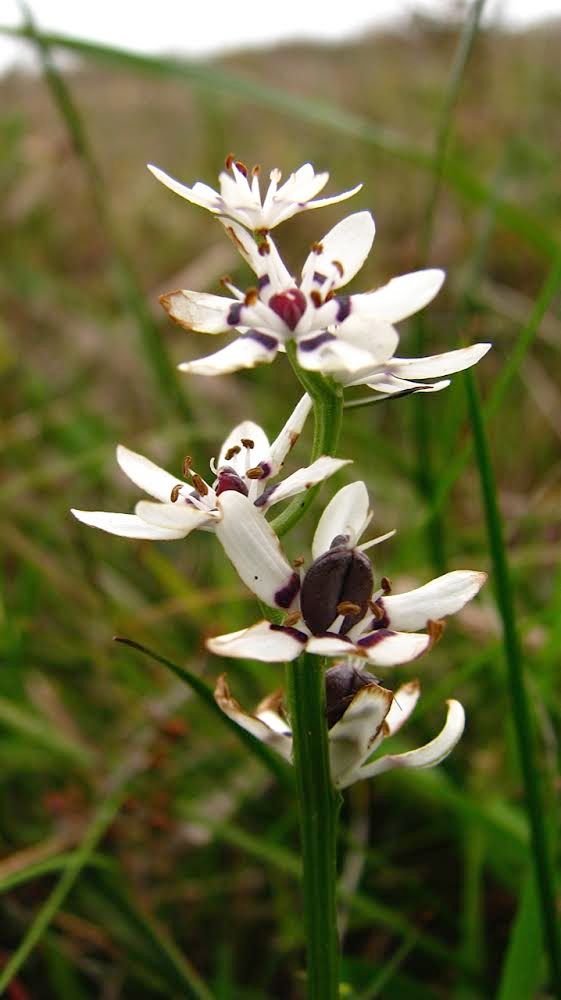 Early Nancy
Early Nancy
The daisy family has many representatives including the clustered small, bright yellow flowers of Common Everlasting, Chrysocephalum apiculatum, which has been planted at the Allen Noble Sanctuary. The long, soft, silver-grey, tapering leaves are also an attractive feature.
 Common Everlasting
Common Everlasting
Austral Stork’s-bill, Pelargonium australe, is also putting on a fine display there with its clusters of pink flowers with red markings.
 Austral Stork’s-bill
Austral Stork’s-bill
The bright lilac-pink flowers of the aptly named Pink-bells, Tetratheca ciliata, can form striking displays this month. The black centre on the nodding flowers are hard to see, but have given rise to another common name of Black-eyed Susan.
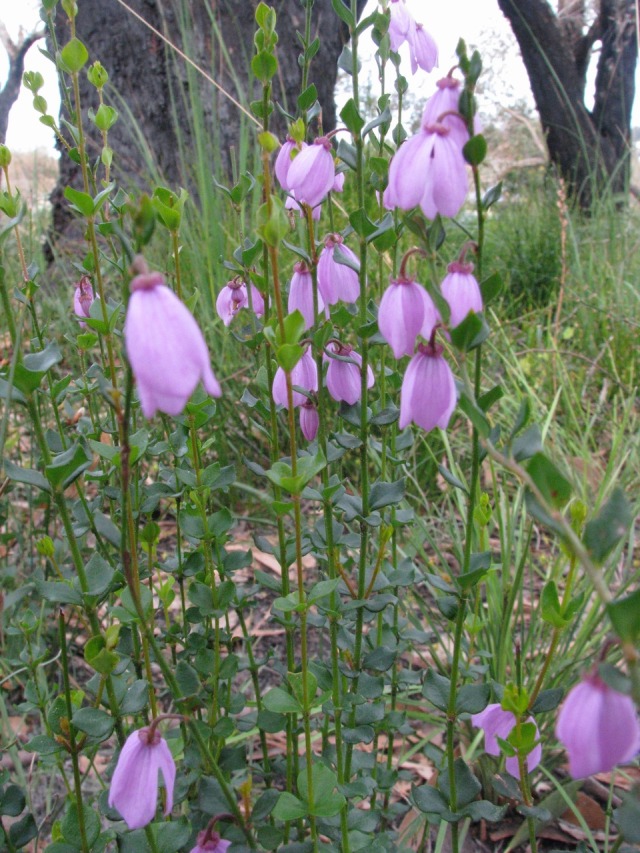 Pink-bells
Pink-bells
Plants from the pea family can be a challenge to identify. A favourite of mine, due to ease of identification, is Rough Bush-pea, Pultenaea scabra. The flower looks like so many other peas, but the heart-shaped leaf is quite distinctive. An easy place to find it is, yet again, the Allen Noble sanctuary.
 Rough Bush-pea
Rough Bush-pea
Three Beard-heaths grow in our district, the most obvious being the large bushes of Coast Beard-heath, Leucopogon parviflorus, with its tiny white clustered flowers and fluffy petals. Check out the cliff top pathways and the Angelsea lookout for this plant.
 Coast Beard-heath
Coast Beard-heath
Silky Guinea-flower, Hibbertia sericea var. sericea, with its bright yellow five-petalled flowers is now in flower along Ted’s Track and many other places. I like to think of golden guineas when I see it. It has tricked me by flowering before Erect guinea-flower, Hibbertia riparia, which I wrote about last month, but was still only in bud in late August.
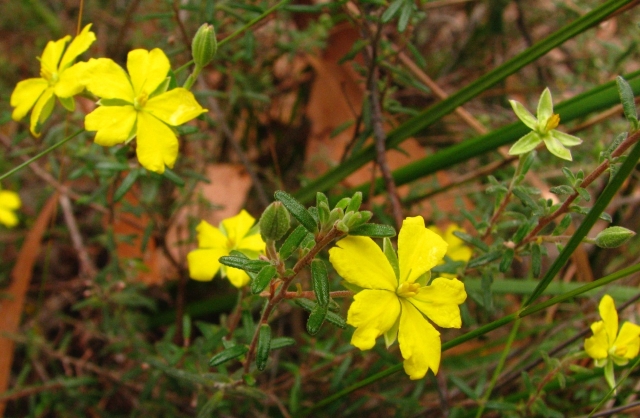 Silky Guinea-flower
Silky Guinea-flower
In Allen Noble Sanctuary there are a few small plants of New Zealand Spinach, Tetragonia tetragonoides, the cousin of Bower Spinach, Tetragonia implexicoma. These are the only ones I know of which grow on public land, so please let us know if you see any in reserves or ‘the bush’. We looked closely at this in the plant study group in order to see the differences between the two spinaches.
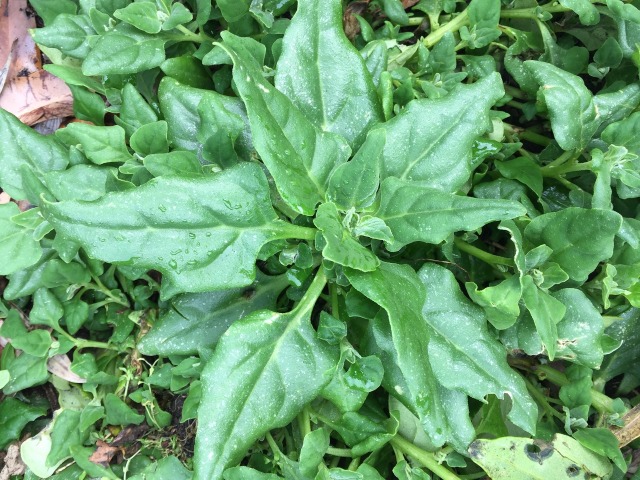 New Zealand Spinach
New Zealand Spinach
Bower Spinach can commonly be found covering and hanging down from our coastal plants—like a bower! It has smaller, almost diamond shaped leaves, and individual, four-petalled yellow flowers on longish stems. It is worth taking a moment to enjoy their sweet aroma, and to use a magnifier to compare the yellow on the exposed side of the petals with the green and furry underside.
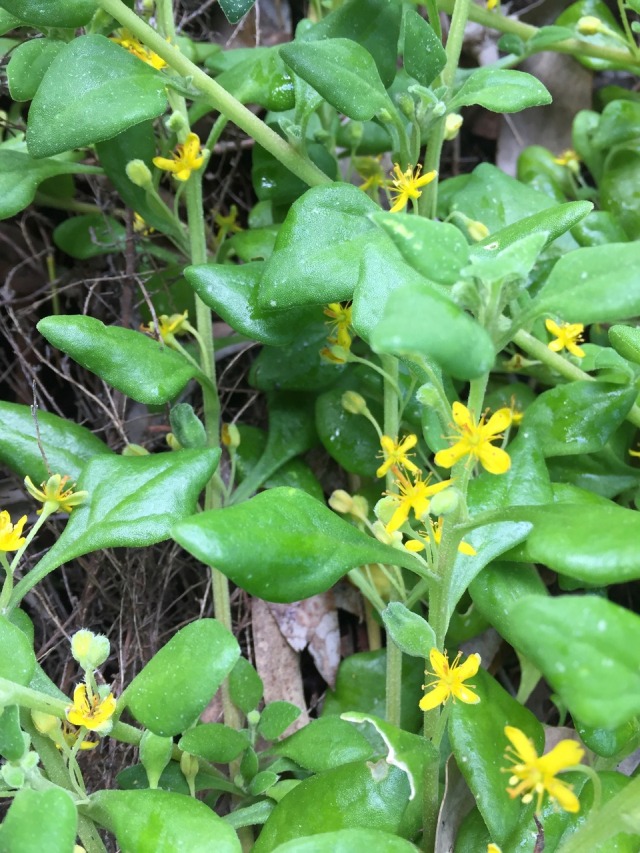 Bower Spinach
Bower Spinach
In contrast, the Zealand Spinach has larger, darker and more arrow-shaped leaves. The flower looks like a small green bud almost hidden in the leaf axils, and a most significant difference is that it is sessile–it does not have a stem.
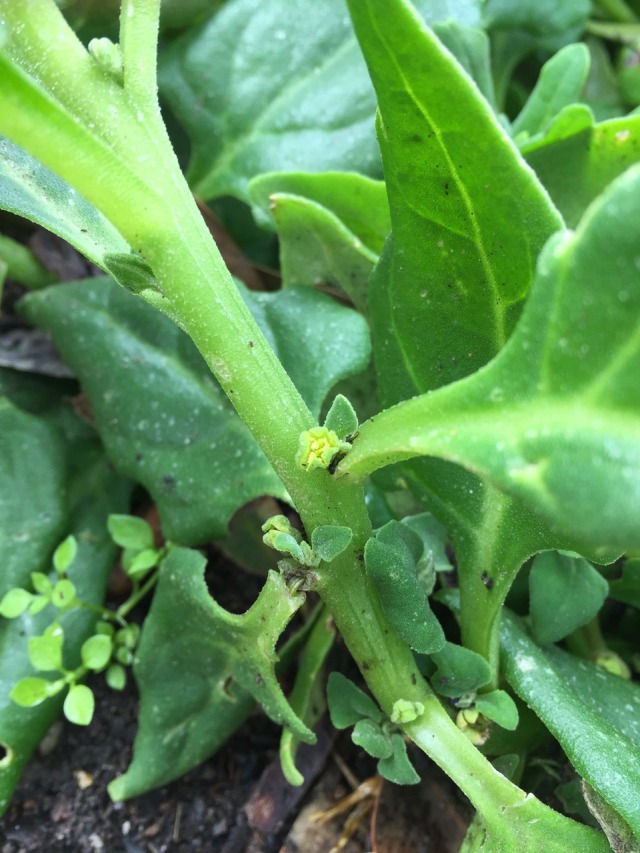 New Zealand Spinach flower
New Zealand Spinach flower
When I came home from the plant study group, I was surprised and delighted to find two very healthy plants growing in my garden, well away from other areas running rampant with Bower Spinach. I had not recognised them before, and have no idea where they came from. I am now closely watching to see how much the tiny green flowers will open up, if at all. New Zealand Spinach is now marketed as a food plant called Warrigal Greens.
We try to have a full range of our local plants on display at the Angair Wildflower Weekend, but some are difficult to find. We are given a special licence to pick indigenous plants, but are limited to public areas that are not in National Parks, including the Anglesea Heath which, in February 2017, was incorporated into the Otways National Park. Private gardens are an increasingly useful source, especially with the work done by our propagation group.
A plant that is particularly difficult to obtain for the show is Coast Twin-leaf, Zygophyllum billardierei. It is designated as ‘near threatened’, despite being quite widespread at Point Roadknight. This means that we are only allowed to get it from private property, so please let us know if you have any at home. It is a scrambling plant found on the cliff tops, with oblong, paired, succulent leaves, which form a Y shape, and single bright-yellow, four-petalled flowers in the leaf axils.
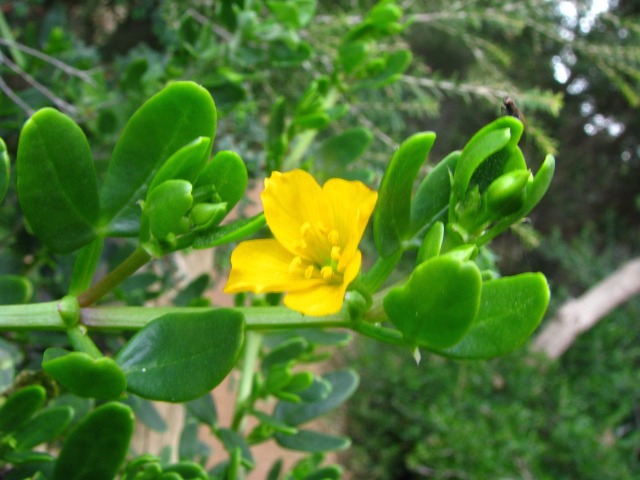 Coast Twin-leaf
Coast Twin-leaf
You will definitely need your Flowers of Anglesea and Aireys Inlet on your spring walks!
Ellinor Campbell